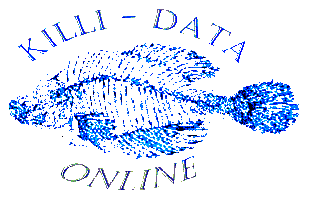KILLI - DATA SERIES, 2012, Huber, Phylogeny of Rivulus
Killi-Data Series 2012 [as a print, ISBN 978-2-9527283-7-9, as a PDF document, ISBN 978-2-9527283-9-3]
Killi-Data Series 2012, 9-25, 3 figs., 2 tabs.
Reappraisal of the Phylogeny of Rivulus and its Allied focused on External Characters.
Huber, J.H.
Abstract: In the present study all known to date phylogenetic lineages encompassing the genus Rivulus in the large sense and its relatives, 44 in total, are benchmarked against a very long list of external characters involving global and detailed morphology of each, plus some characters related to biology, behavior and ecology, plus a few characters concerning the vertebrae counts and their structure. The parsimony analysis for these 144 characters results in 3 trees only, very much in line with the global stability of major lineages and the consensus tree produces bootstrap values that are much higher than previously released studies with morphological and osteological characters. In the resulting tree, outside Kryptolebias already separated in 2004, the genus Rivulus in the large sense is shown as a monophyletic assemblage like in the molecular study by Murphy, Thomerson & Collier (1999), with annual and non-annual species separated, but unlike Costa (2011) who used both morpho-osteological and molecular combined characters. Apart from the coherence of the genus Rivulus in a large sense, the analysis newly suggests the primitive position of Millerichthys, the monophyly of major annual subclades, and the phylogenetic relationship of a clade of 3 subgenera of Rivulus, namely Prorivulus, Atlantirivulus, Melanorivulus in line with a previous palaeo-bridge hypothesis and the minor osteological diagnostic characters that were forwarded for these 3 taxa should be deepened and re-evaluated. Two other subunits of Rivulus, namely Anablepsoides and Oditichthys, are atypically placed in the tree, but their 2 type species were not studied by Costa (2011) and that too would need re-evaluation. Finally several phylogenetic lineages belonging to the huge -and very poorly known- Amazon basin ends up in an unstable position and more material and characters are thought necessary for further research of this very difficult group of fish.
How to order a print or a PDF of this volume, including this article ? Follow instructions and simply process the ORDER FORM


